The most effective way to measure product engagement is with a metric called “product engagement score.” This is a user engagement metric you can't afford to overlook.
A product engagement score (PES) is a metric that provides an overview of how users interact with your product. It helps you to quickly diagnose how a specific product is performing. It reveals what is going on with your product and business, making your product engagement score very important and relevant.
It also provides a holistic view of customer engagement and combines factors such as feature adoption, average stickiness, and growth into a single data point.
So, how can you use your product engagement score to create better experiences for your customers and an overall better product? How can this help with user engagement?
How to Measure Product Engagement Score?
Understanding your product engagement score is so important because it will help you drive value for customers and results for your business. And that helps with customer retention, product adoption, and more.
To measure your product engagement score, you need to calculate three elements:
- Adoption: The average number of core events adopted across all active Visitors or Accounts.
- Stickiness: The average of the percentage of weekly active users who return daily (DAU/WAU), or the percentage of monthly active users who return daily (DAU/MAU) or weekly (WAU/MAU).
- Growth: The sum of new and recovered Accounts or Visitors divided by dropped Accounts or Visitors.
Once you've gathered those metrics, it's time to calculate your PES. It's fairly simple to do, take the average of those numbers: (Adoption + Stickiness + Growth) / 3
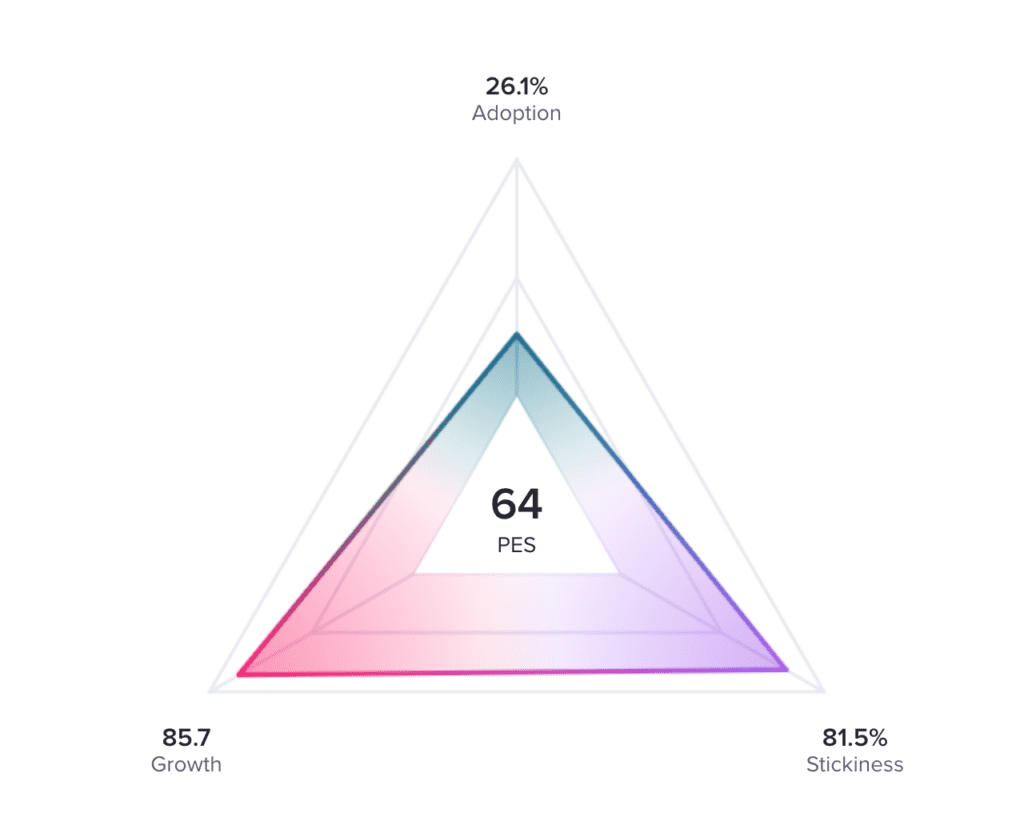
Taking the time to work out your product engagement score is a worthwhile investment.
It's a tool Product Managers (PMs) can use to diagnose how a product is performing. It allows you to have a tangible way to measure your efforts (marketing, development, enablement, etc.) to improve your product and customer experience. Your PES reveals how effective those efforts have been and gives you a better idea about where you can continue to improve and what areas are really working well.
Step 1. Measure stickiness
PES measures stickiness and refers to how many users consistently return to use your product. This is part of your customer engagement strategy. It's also why people will often ask whether or not their product is "sticky."
Do users stick around to use it as part of their daily professional life? If not, your product may need some attention to help you obtain more loyal customers.
There are two ways to measure the stickiness of a product:
- Daily Active Users/Monthly Active Users: to determine the percentage of monthly users who engage with your product daily.
- Weekly Active Users/Monthly Active Users: to determine the percentage of monthly users who engage with your product weekly.
Below, you’ll see a basic example of how a company measures the stickiness of its product. As you can see, the stickiness percentage continues to rise, which is a good thing.
This is ideal from a customer satisfaction point of view.
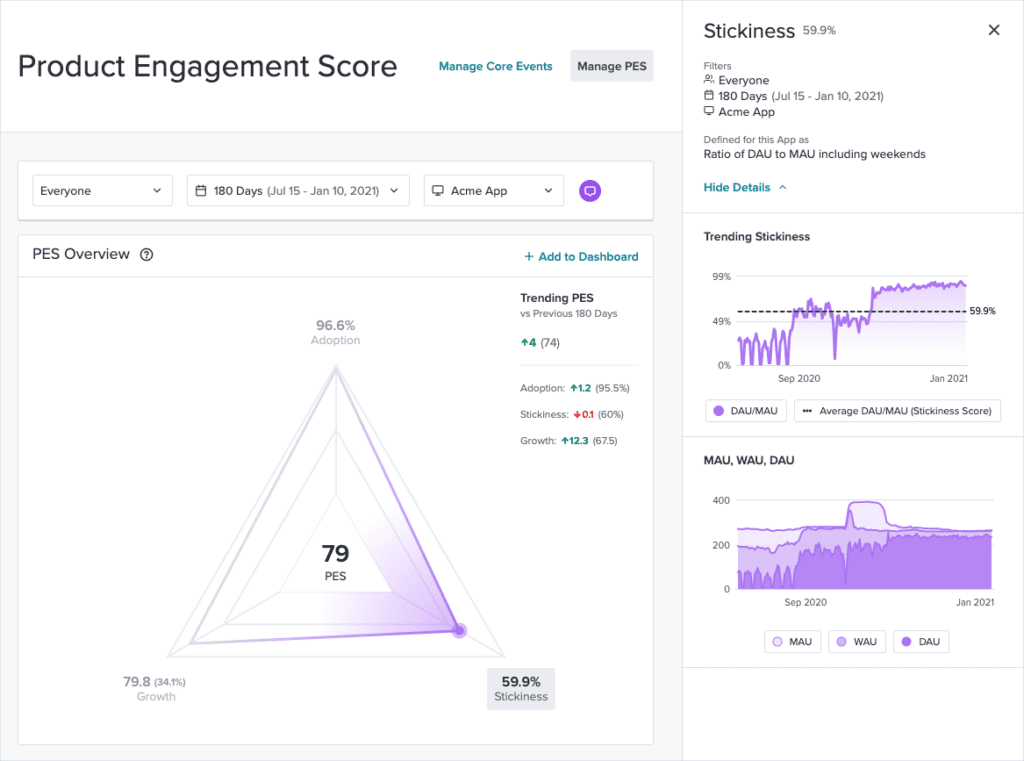
Stickiness matters because you want people to keep coming back to use your product. You want them to be excited to use it and having a product with a high stickiness rate means that it will be so much easier for you to attract and retain new users.
Step 2. Measure adoption
Feature adoption is the average number of core events adopted across all active visitors or accounts. Feature adoption helps you identify how many people in your active user base are actually engaging with and using a specific feature. It is a user activation metric and a vital component of determining your product engagement score.
Dig into your product data to better understand which features represent your core events, as well as where and when your users (and different segments of users) are interacting with them. From there, you can leverage in-app messages to guide customers to these core areas, ensuring they see the more valuable parts of your product.

Feature adoption matters because it measures retention and expansion. If a user continues to use certain features, they will receive more value from the product and are less likely to churn.
Step 3. Measure growth
Tracking your growth (also known as Quick Ratio) considers both the effectiveness of your customer acquisition and retention efforts. In a single ratio, you can see how your sales, marketing, product, and customer success teams are doing. It shows you where you’re succeeding and areas you need to focus on.Growth uses a specially configured version of the quick ratio to measure positive or negative net growth of visitors or accounts. The calculation scales the resulting ratio to a score between 0 and 100 to convey growth during a specified time period. It's the sum of new and recovered Accounts or Visitors divided by dropped Accounts or Visitors.

Here's a breakdown of each of these:
- New: a visitor or account's first ever event is in this period.
- Recovered: Visitor or Account wasn’t present last period but is present this current period.
- Dropped: Visitor or Account was present last period but is not present in the current period.
Within Pendo, the Growth drill down shows an overview of the quick ratio components during the selected time period and a breakdown of accounts by active visitor growth.
PES best practices
When you’re trying to figure out your product engagement score, there are four best practices that we recommend you follow:
- Start small and be specific — keep it simple
- Focus on your number — not what your competitors report — and track over time
- Slice PES by applying it to different customer populations
- Adjust the weighting to your needs
When you measure stickiness, remember that the decision of whether to measure it daily, weekly, or monthly depends on your business. The best thing to do is to align the time period with your business objectives. Since you’re measuring active users, you must determine what active actually means for your product. Get really specific about that because you want to measure the results as accurately as possible.
The best practices for measuring feature adoption include contextualizing your target rates. Consider past adoption rates and identify your objectives in advance. It’s also wise to examine feature adoption at multiple levels including the user level, account level, and segmented-user level. You also need to identify the right features and measure the action that you believe to be the most important action a user can take when engaging with that specific feature.
Tactical recommendations to improve product engagement score
Once you know your product engagement score, you can take tangible actions to help increase product engagement.
There are seven main ways that you can improve your product engagement score (PES):
Understand where you stand on the phases of product-market fit
Product-market fit is often overlooked, which is a huge mistake because it can impact which of the three components of PES is the most useful and relevant at specific times.
If you’re at the early stages of your product being released to the public and you’ve gained your first customers, this is a good time to measure your stickiness. How many users are hanging around to use your product? How many are using the main feature? You then move on to predictable revenue and actual predictive revenue, which might not be exactly what you thought. Finally, you’ve got demand outweighing capacity.
It’s important to know where you are in the product-market fit spectrum. Here is a visual to help you pinpoint your position:
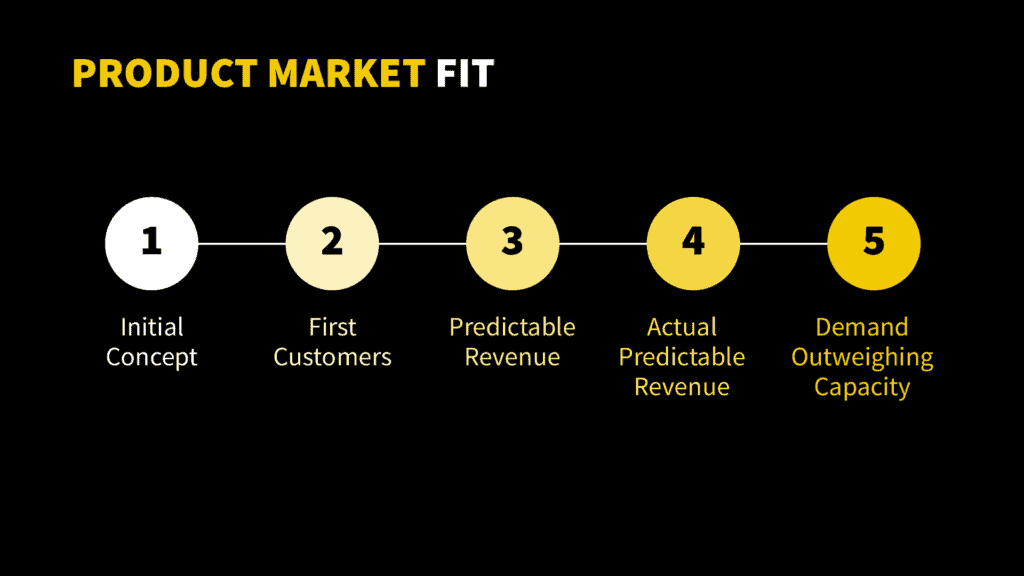
Improve your first-time user experience or 'FTUX'
First-time user experience (FTUX) is hugely important. You need to make sure that users get immediate value from your product.
If they don’t believe they are getting enough value, they will not hesitate to abandon your product. You also need to do your best to minimize idle time and set up the least number of barriers so that users can start using the product sooner rather than later.
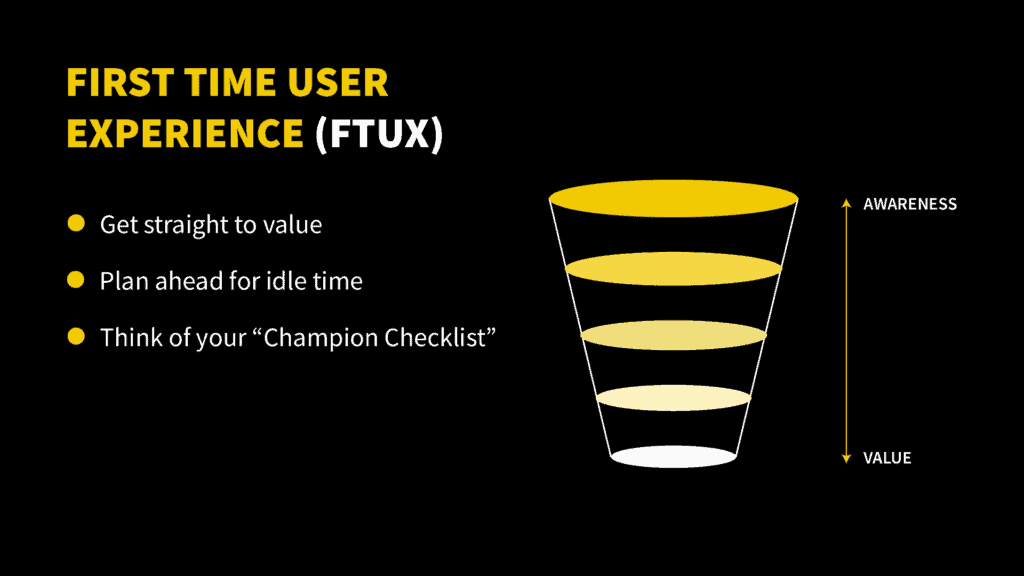
Leverage channels to engage users and create usage habits
An effective way to boost your product engagement score is to engage and re-engage users.
This means providing channels and rewards that keep users engaged. Create usage habits that align with value. If you want to get more engagement from your users, make sure that your message is meaningful and that users can actually connect with it. Let customers know that you care about them and appreciate their input. If you continue to attract, engage and delight users, you will continue to grow and build your user base.
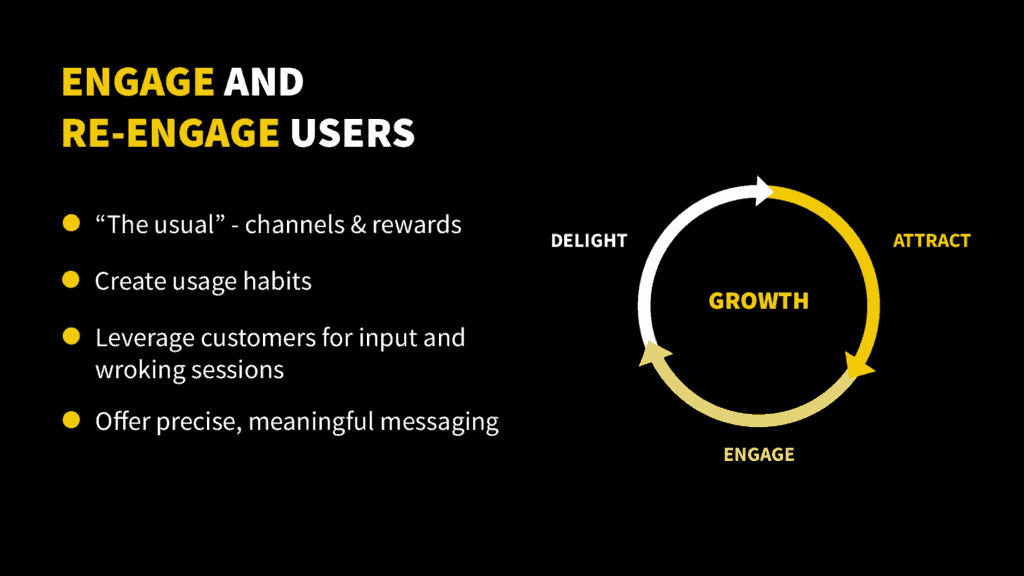
Build champions and a product advisory board
Your product has champion users who love your product. They’re the ones who are telling other people about your product, constantly engaging with you, and are essentially your biggest advocates.
By understanding what inspires your product champions and how they find value in your product, you can use that information to provide the same value for new customers.
Show some love to your detractors
It’s also important to emphasize with your detractors. You can learn a lot from them about your product and why they weren’t the biggest fans. With this insider knowledge, you can improve your product further.
Convert your passives
If you have passive users, try to convert them. They are close to becoming promoters and champion users of your product, but they just need some encouragement to help them take that next step.
Understand your competition
Finally, you need to understand your competition. Ask your former prospects who choose a different product instead of yours and find out why they made that decision. Leverage your existing network by asking them about their experiences with your competitors.
Use PES to reach new heights
I hope this post has helped you to better understand what a product engagement score is and ways that you can improve yours so you can better serve your customers and improve your product.
With the right engagement model in place, your business will reach new heights.









